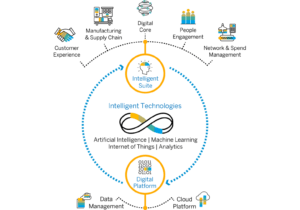We love SAP’s strategy of working with all partners in an effort to give customers greater and greater choice. As a result, there are now numerous options in terms of how to implement SAP HANA® regardless of the size of your environment or the type of infrastructure you prefer. Recently, some hyperconverged infrastructure has received certification to run SAP HANA. And while hyperconverged infrastructure (HCI) can be beneficial for some workloads, its fundamental design lacks the feature set enterprise applications generally require.
While being certified is important, being tested and proven in the real world is something else. This blog goes beyond the hype to help customers understand some of the important differences when comparing HCI and TDI (Tailored Data Center) solutions for SAP HANA. Even for lighter workloads, we have many customers who have gone down the HCI path, encountered performance and budget frustrations, and came back to Pure. Move to the context of the SAP HANA world, and the shortcomings of HCI are generally costlier.
Building a resilient, scalable, and highly performant SAP HANA environment requires having the freedom to customize building blocks according to the manner in which your business and IT team is set up. These building blocks are what provide guaranteed performance and scalable architecture. Let’s dive in.
Cost
SAP HANA and its underlying infrastructure are some of the most important investments a business makes. Therefore, picking the right infrastructure from the outset of the journey is a crucial decision. Significant cost differences will be apparent not only in the hardware, but increasingly in the SAP license and other related software licenses.
Data Tiering
While possible, the ability to scale CPU, memory, and storage in HCI is limited. The natural design of HCI recommends a balance between storage and compute. In the SAP world, this limits a customer’s ability to data-tier their SAP solutions. Data tiering is a very important topic in the SAP HANA world, as it allows SAP shops to save a tremendous amount on licensing and hardware if done properly. When limitations are inherent between compute and storage, SAP administrators are often forced into making unnecessary purchases of compute or storage when they need to scale. Alternatively, with data tiering there are often opportunities to manage your data more efficiently, and thus avoid additional expenditures. SAP’s warm data solutions run on Pure efficiently and customers see exponential hardware and license cost savings while still accessing this data at high speed. Along with SAP, Pure Storage® has done thorough side-by-side testing that demonstrates how data tiering technologies can improve cost efficiency.
Business Continuity
Cost can also become an issue when you start building your business continuity plans and replicating your data. This is one of the most important tasks in the SAP HANA world, yet very often it’s not thought of until it is too late. Pure Storage offers a high-availability and disaster recovery solution, at no extra charge, that is extremely easy to build. Pure’s FlashArray delivers 100% performance through a controller or media loss. By contrast an HCI node failure is a simultaneous storage failure and as such performance is impacted as workloads are redistributed across remaining CPU & memory, data reconstruction will negatively impact every node.
ActiveCluster for SAP
Nodes
The proven numbers accompanying the latest Pure FlashArray SAP HANA certification confirmed that we can give customers the ability to connect up to 44 nodes on the same FlashArray™. As of this writing, Pure’s number of connected servers is at the top of the industry, and while initially this may not be thought of as a priority, SAP environments can grow – and require new SAP instances – very quickly.
SAP HANA Nodes Scaling on FlashArray//X
If you’re new to Pure, you may not know about one of the core features of the FlashArray, which is to Non-Disruptively Upgrade (NDU) the FlashArray’s software as well as hardware. Ask any Pure customer, and you’ll likely hear about their stress-free upgrade experiences with our FlashArrays, all performed by our unrivaled Pure Storage Support team (the support experience is a key contributor to our high NPS score). You may think, “OK, every storage vendor talks about non-disruptive upgrades. Nothing new here.” Well, that may be true for software upgrades to some extent, however non-disruptive upgrades with hardware is a completely different ball game. Keep in mind, I’m not just talking about adding additional capacity or adding controllers to an existing storage array. I’m referring to the ability to perform an in-place upgrade of the existing controllers to any other controller regardless of family or generation while data is churning online and running at 100% performance. In contrast, for HCI solutions to scale, the entire data set has to be potentially redistributed across all nodes, impacting performance.
Freedom to Choose What’s Right for You
As previously mentioned, there are different infrastructure options as you go about implementing SAP HANA. The TDI model (Tailored Data Center) has dominated customers’ SAP HANA adoption for many reasons, most notably because it gives customers the freedom to utilize hardware they already have and the ability to continue purchasing compute, network, or storage from their favorite vendors. Pure Storage has worked with several best-of-breed compute partners to create complete SAP HANA reference architectures. These reference architectures act as a guideline and a reassurance for customers: they include rigorous testing to give customers clear expectations when kickstarting their SAP implementations.
Performance
Whether you’re implementing SAP HANA for your core data in S/4HANA or for your analytics and reporting in BW/4HANA, performance is always one of the most important aspects of an implementation, and expectations among SAP administrators and end-users are always high. Consistently, HCI’s performance lags behind Pure FlashArray. And while SAP HANA is an in-memory database, it relies heavily on storage performance in several ways:
- Latency and IOPS
- Predictability
Latency and IOPS
The fact that HCI stores multiple copies of each block of data will have a tremendous effect on IO. Some customers add other technologies to alleviate this issue, but these solutions always negatively impact latency. The FlashArray series’ consistent sub-1ms latency has proven to be one of its core advantages in delivering superior performance with SAP HANA.
Predictability
As SAP HANA runs the customer’s core business processes, “rush hours” are expected during the system’s busy periods. The fact that HCI is running storage and compute on the same node makes it difficult to predict performance. As more and more IOs process cycle through the CPU, performance becomes very unpredictable during rush hours as unexpected jobs continue running. These jobs are going to be different for each rush hour, turning them into “IT nightmares” as the business impatiently waits. Eventually, SAP system administrators will be unable to proactively adjust the system’s batch and dialog processes to meet requirements and SAP HANA will run into latency issues, resulting in job failures. This can be a disaster in the mission-critical world, where time is a critical asset.
SAP administrators need all the resources they can get to run their applications at the level they need. They also rely on features such as snapshots, replication, deduplication, and compression to streamline their tasks. As more and more of these features are enabled on HCI, performance is again impacted. Pure Storage offers all these features and more without any performance impact or value of service degradation, and thus SAP administrators can be confident in addressing rush hours – configuring their applications and setting dialog and batch processes accordingly.
A critical function within SAP HANA is the transformation of data from delta storage, which is write-optimized, to main storage, which is optimized for read performance and memory consumption. Query performance will decrease dramatically if the storage layer can’t handle delta merge quickly and efficiently. Unlike HCI, Pure Storage all-flash delivers no delta-merge lag, which means SAP HANA operates with maximum efficiency, and your business responsiveness and agility can grow.
SAP HANA on Pure FlashArray//X
Operational and Financial Risk
HCI does offer simplicity, but this comes at the cost of operational and financial risk. In the mission-critical world, these are risks that can be hard to afford.
Troubleshooting
As SAP administrators troubleshoot issues, they are generally eliminating false positives. Since HCI’s architecture is tightly coupled, the troubleshooting process is unnecessarily cumbersome, and it’s almost impossible to get to the real cause quickly. SAP administrators look for indications that the problem might be caused by bad code, or a database, server, network, or storage issue. An HCI environment will make getting to the bottom of the issue – and solving it – more difficult and more time-consuming. It’s tricky enough determining what type of hardware an issue is related to; doing so on HCI environments only makes it more difficult.
Downtime Savings
Pure’s business continuity solution, Purity ActiveCluster, has been tested for SAP HANA in a variety of scenarios in which the end-user is not aware of a storage failover. With HCI, however, if storage goes down, compute also goes down – potentially leaving end-users stranded.
More Risks
TDI solutions have helped bring down TCO on SAP environments, and continue to do so. Migrations and upgrades are easily performed using Pure FlashArray, as you can move nodes from one host to another. Conversely, HCI’s environments are tightly coupled, making SAP Basis tasks lengthier and more complicated.
In summary, SAP teams need to be very careful as they plan their SAP HANA journey. Implementing the solution is only part of the journey; maintenance – including upgrades, migrations, and troubleshooting – and automating maintenance tasks, such as system-copies, are also integral parts of this journey. We continue to embed more and more application-oriented services in Pure FlashArray in order to empower administrators across the stack. As an example, SAP administrators absolutely love CAT for SAP as it eliminates time and risk from SAP system-copies.

CAT for SAP – System Copies Automation
SAP’s vision of “The Intelligent Enterprise” connects customers’ most important data on HANA with different data types coming from next-gen technologies such as machine learning, IoT, and artificial intelligence. Pure Storage SAP solutions complement this strategy with the right infrastructure for both worlds, so you can make use of all sorts of data.

SAP Intelligent Enterprise Vision – Courtesy of SAP
The Choice is Yours
Infrastructure is exciting and ever-changing. There’s always something new making headlines, with many announcements claiming a new direction for the data center. But headlines only last so long. While there’s a place for HCI in the datacenter, entrusting your most mission-critical database to HCI is a high-risk proposition. At Pure, we believe the TDI model gives customers the best of both worlds – the performance that SAP HANA delivers, together with the simplicity and agility that Pure has always been known for. Customers who run SAP on Pure are some of our biggest fans. Don’t take our word for it – take theirs.




